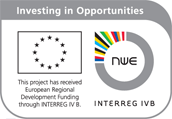Installation and testing of rainfall radars
Weather radars are the only measuring devices that provide space-time estimates of rainfall. RAINGAIN tests the innovative X-band radar technology (i.e. emission frequency close to 10 GHz) for urban water management. Its higher frequency with respect to classical S-band and C-band radars increases the spatial scale resolution by a factor of about ten (from Km to hm scale), hence it increases the number of precipitation data pixels by a factor of a hundred with negligible costs. Furthermore, these radars are lighter and less expensive, and they would be manageable and affordable to local water authorities.
This work package's action consists of four steps :
- Action Wp1A1 : Acquisition of X-band radars: preparation and realization of public tender procedures, detailed studies on location and installation, design of infrastructures (e.g. power and internet connections), getting the necessary authorizations for emission and infrastructures and selection of the best offer.
- Action Wp1A2 : Installation and testing of the radars, set up of internet platform for data transmission, validation of the obtained data set up operational data flow monitoring
- Action Wp1A3 : Appraisal of rainfall data and downscaling models: investigation of all possible rainfall data sources, collection of rainfall data and quality assurance, review and appraisal of the existing rainfall downscaling models. Comparison of test site results.
- Action Wp1A4 : Future data use and resolving ownership of acquired radars: the radars will continue to function and deliver rainfall data after the end of the project period. During the project, a platform and agreements will be set up for future dissemination of rainfall data, after the project has ended.
Transnational cooperation in RainGain is very important at this stage of the project. The Belgian partners acquired their X-band radar in 2008 and will bring their knowledge and experience with installation and validation of the equipment to the benefit of the partners that are to acquire radars in this project. The validation results of the X-band radars are to be intercompared and compared with the super-resolution data from the UK pilot to evaluate the quality of the respective results. The harmonization of basic pilot locations characteristics descriptions will allow for intercomparison and knowledge exchange.



